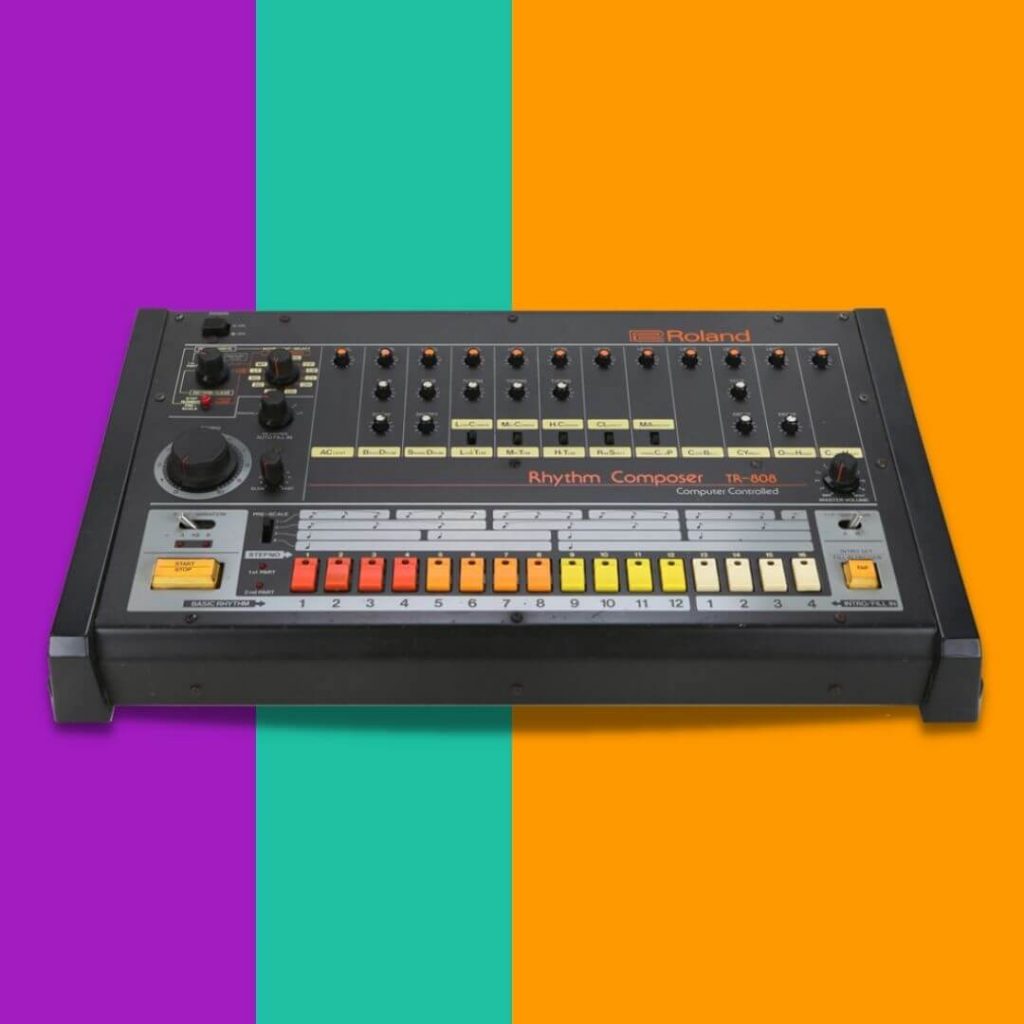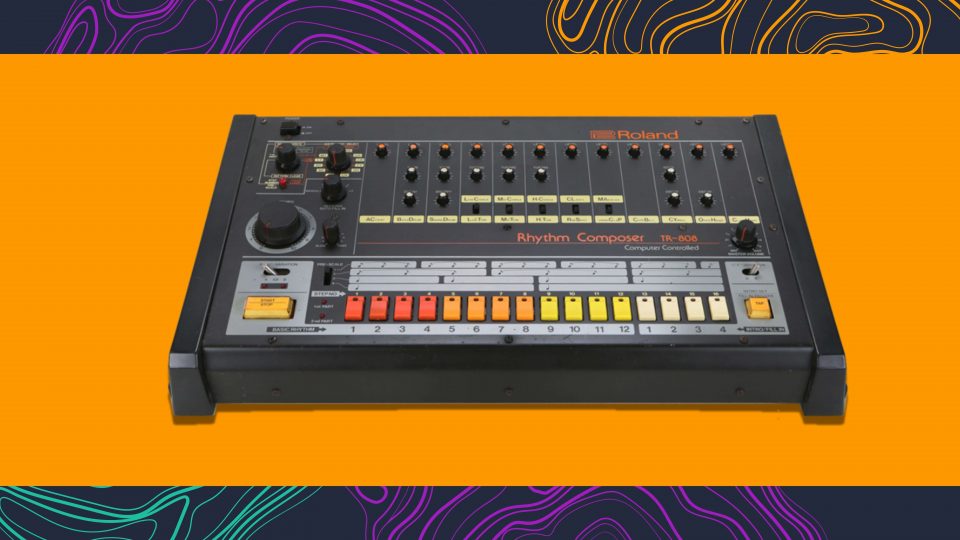What is an 808 Kick Drum? A Brief History
An 808 has become an iconic sound. Whether for pop music, hip hop or trap – 808s are heavily a sought after sound.
Dating back to the 80s, 808 drums quickly became a staple in music. You can hear them in Whitney Houston’s I Wanna Dance With Somebody, Paul Revere by Beastie Boys, and Aphex Twin’s Xtal to name just three examples. Of course, the 808 kick drums we know today are a little different to that of which you’d hear in a Whitney Houston track…
Today, you’ll hear 808s in every trap track, you’ll find them plentiful in pop music. And you’ll hear them in a lot of electronic music too.
So, it’s time to talk about what an 808 actually is. By the way, we’ve listed some of our favourite sample packs where you can find great 808 kick drums at the end of the article!

What is an 808 Drum?
Let’s go back in time, shall we?
The 808 sound originates from the Roland TR-808 drum machine. The TR-808 entered the market in 1980. From that point on, it very quickly became a benchmark drum machine and changed how people made music.
As we mentioned earlier, you will find the sound of the TR-808 in a lot of 808s and 90s music! But it’s not just pop and hip hop genres that the TR-808 made its mark on. The TR-808 drum machine defined the sound of techno and house in the 80s and 90s too!
Today, we classify an 808 as a kick drum with a long decay tail characterised by lots of low-end frequency content. However, the TR-808 was far from limited to just kick drum. The device has a programmable kick, snare, low tom, mid tom, hi tom, clap, cowbell, open hi-hat, closed hi-hat, low conga, mid conga, hi conga, clave, rimshot, maracas and cymbal sounds! That is a lot more than what we today consider an 808 drum.
What does go to show the waves this drum machine made is that the TR-808 is still considered a piece of vintage gear!
The 808 Kick Drum
“The TR-808’s kick drum sound is made using a resonating trigger pulse, similar in behaviour to the way that a drum head vibrates when hit. When a drum head is hit multiple times in succession, even using the same force, the way the sound resonates will change depending on the state of vibration from the drum head. The same is true with the TR-808 kick sound.
Roland
As time has gone on, ‘808’ has become the go-to label not only for drum machine – but for its kick drum.
But don’t let that trick you into thinking an 808-style kick has to come from a Roland TR-808! You are far more likely to hear a software emulation, a clone of the original hardware, or simply a sample than you are an original 808 kick. But… why?
Perhaps one of the biggest reasons is that the TR-808 is of old technology. In other words, we can do a lot more today than we could in the 80s. Digital music has brought us leaps and bounds ahead of where we once were!
Available Controls on the TR-808
Take a peep at the control panel of the TR-808 and you’ll see that the bass drum circuit offers only three controls: a Level control for volume, Tone for EQ’ing the sound, and a Decay control. There are no pitch or tuning controls that, today, are widely used in commercial and “bedroom music”.
Tuning your kick drum to fit the key of your track typically allows it to sit better in your mix. This is why a handful of owners customised their 808s and added pitch adjustment. But other artists and producers who made use of the 808s’ were actually making use of samples of an 808 rather than the actual unit!
It didn’t take very long for the sampling of the 808 kick to become a staple of music production. From the early 1980s, producers began turning, filtering and processing the 808 kick with their own gear and software.
And now, of course, we have even more choices! You can buy sample packs of perfectly tuned 808 kicks, make your own, or just use a software emulation instead. Kick 2 is a great plugin where you can get started and make your own 808 kick drums!
Here are a few of our favourite 808 kick drum sample packs:
You’ll find the perfect 808 kick drum right here.
The sampling revolution has risen in popularity and shaped music since the early 1970s. Sample culture continues to transform how millions of artists and producers do their thing in DAWs.
You too can break conventional norms, challenge the status quo, and open Pandora’s box of sound design.
Mixxed works with a growing number of sample labels and contributors to provide you with an affordable sample subscription service that’s more accessible than any before.
You’ll have access to our growing catalogue of loops, one-shots and sound effects that you can browse, download and keep forever for less than $3 a month.
Sign up today to find your sound!
